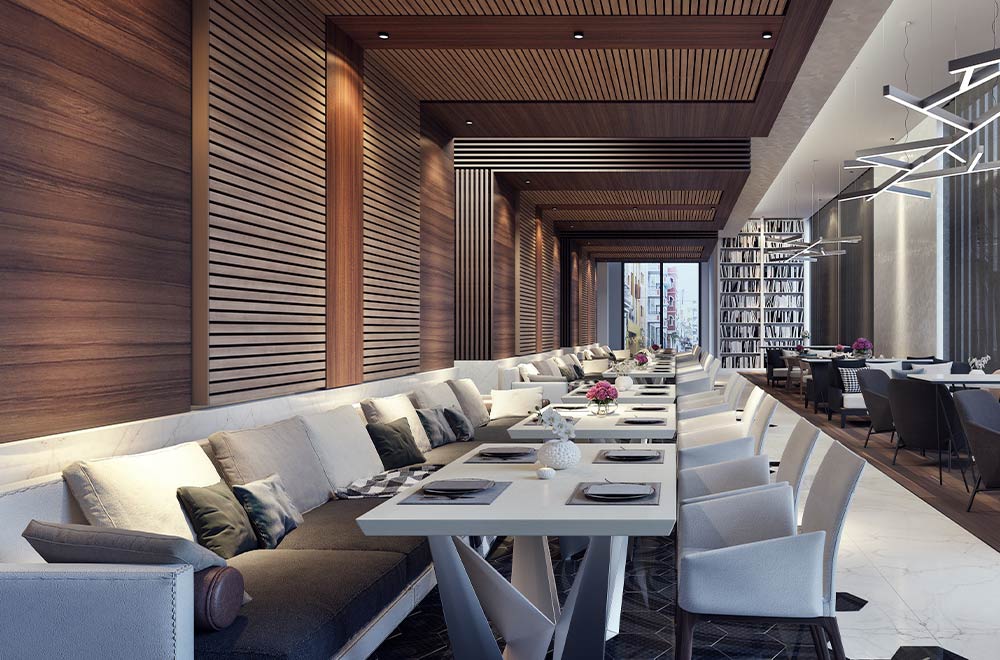Savor Genuine Oriental Cuisine With a Pan-Asian Spin for a Cooking Experience
Getting started on a cooking journey through genuine Eastern cuisine, improved with a Pan-Asian twist, uses an unique possibility to discover the rich tapestry of flavors that specify the region's varied culinary practices. This experience invites you to savor the exquisite balance of preferences-- wonderful, salted, spicy, and sour-- harmonized by aromatic natural herbs and seasonings. Visualize the innovative blend of Thai curry and ramen or the unexpected pleasure of sushi burritos. As you contemplate these tempting meals, think about the social narratives and historic impacts that form them, each bite using a story waiting to be discovered.

Checking Out Pan-Asian Flavors
In the world of international gastronomy, Pan-Asian cuisine sticks out for its impressive diversity and the harmonious interplay of tastes from various Asian cultures. This culinary method commemorates the rich customs and distinct ingredients found across the continent, creating a tapestry of tastes that is both gratifying and appealing. Trick to Pan-Asian food is its capability to balance contrasting tastes-- sweet, salted, spicy, and sour-- while highlighting the quality and quality of each active ingredient.
From the umami-rich soy sauce of Japan to the intense chili peppers of Thailand, Pan-Asian food supplies a substantial combination of flavors. These elements are commonly integrated in creative means, enhancing dishes with layers of intricacy. For example, using aromatic natural herbs such as lemongrass and cilantro, usual in Vietnamese and Thai food, includes a rejuvenating illumination to recipes, while the unification of coconut milk delivers a velvety, abundant appearance.
The focus on fresh produce and fragrant flavors ensures that each meal is not just a feast for the preference buds yet likewise for the detects. Pan-Asian food welcomes diners to start a cooking trip, checking out the large and varied landscapes of Eastern gastronomy with every bite.
Combination Recipes to Try
While Pan-Asian cuisine is celebrated for its traditional tastes, the contemporary culinary landscape is increasingly embracing fusion meals that mix these traditional components with influences from other regions. This innovative technique not only honors the rich heritage of Asian culinary arts but additionally presents novel taste experiences that appeal to contemporary tastes.
A prime instance of such a combination meal is the Korean-Mexican taco, where marinated bulgogi beef is wrapped in a cozy tortilla, covered with kimchi and a spicy gochujang-infused salsa. This mix marries the vibrant, tasty flavors of Korea with the dynamic, fresh components of Mexican food. Similarly, sushi burritos have gotten popularity, amalgamating the fragile virtuosity of Japanese sushi with the hearty, hand-held benefit of a burrito, usually including combination active ingredients like tempura shrimp and avocado with a drizzle of wasabi mayo.
An additional noteworthy dish is Thai curry ramen, which infuses the luscious, fragrant seasonings of Thai curry into the soothing broth of conventional Japanese ramen, creating an unified blend that entices the detects. These combination meals prolong beyond plain uniqueness; they represent a cooking discussion in between cultures, motivating expedition and innovation in the globe of Pan-Asian cuisine.
Vital Components and Flavors
To truly appreciate Pan-Asian cuisine, one should understand the necessary active ingredients and flavors that create its foundation. This varied cooking style attracts from a rich tapestry of Oriental practices, utilizing a harmonious mix of flavors and appearances.
Fragrant elements are essential, with garlic, lemongrass, and ginger being ubiquitous across various Pan-Asian recipes. These ingredients give an aromatic base that improves the intricacy of flavors. Seasonings such as star anise, cardamom, and cinnamon introduce heat and personality, echoing impacts from regions like China and India.

Food Preparation Strategies and Tips
Mastering the art of Pan-Asian cuisine needs knowledge with its unique cooking techniques, each adding to the vibrant tapestry of flavors this culinary custom is commemorated for. Central to these approaches is the stir-fry, a quick food preparation strategy that preserves the nutritional integrity and brilliant colors of components. Using a wok, the stir-fry approach permits also warmth circulation, important for accomplishing the particular structure and flavor balance of Pan-Asian dishes.
An additional fundamental strategy is steaming, particularly prevalent in Chinese food. This mild technique maintains the natural tastes and nutrients of components, making it perfect for seafood and vegetables. Dumplings, a precious staple, often gain from steaming, leading to soft, delicious structures.
Barbecuing, additionally essential, imparts great smoky depths to dishes such as Oriental bulgogi or Japanese yakitori (asian restaurant isb). This strategy typically entails seasoning active ingredients, permitting flavors to pass through deeply before cooking over an open fire or warmer
Lastly, mastering the art of stabilizing tastes-- sweet, sour, salted, bitter, and umami-- is important. Appropriately layering these aspects can boost a meal from normal to remarkable, providing a complicated and satisfying cooking experience that personifies the significance of Pan-Asian food.
Eating Experiences Worldwide
Across the world, Pan-Asian cuisine offers an unparalleled eating experience, commemorated for its abundant tapestry of tastes and dynamic discussions. This cooking sensation has gone beyond social borders, capturing the hearts and palates of food lovers worldwide. In cosmopolitan cities fresh York, London, and Sydney, Pan-Asian restaurants offer as fusions where culinary practices from Thailand, Japan, China, and past merge, offering restaurants with an eclectic mix of dishes that highlight the region's variety.
The global charm of Pan-Asian cuisine exists in its capability to use both credibility and technology. Cooks skillfully wed conventional ingredients such as lemongrass, soy sauce, and miso with contemporary techniques, resulting in dishes that are both familiar and Resources refreshingly brand-new. This blend allows diners to get started on a culinary trip that values heritage while accepting modernity.
Furthermore, eating experiences are elevated through attentively made environments that show the principles of Pan-Asian looks. From minimalist Japanese-inspired insides to dynamic Thai-themed areas, each dining establishment supplies a special ambiance that complements the culinary offerings. As an outcome, clients are not merely consuming a dish resource but partaking in a cultural experience, making Pan-Asian eating a truly international phenomenon.
Conclusion
The expedition of Pan-Asian cuisine provides a profound understanding of the detailed interplay of flavors and culinary traditions across Asia. By welcoming combination meals such as Thai curry ramen and sushi burritos, the cooking trip not only highlights the flexibility of conventional ingredients but additionally showcases cutting-edge modern methods. This gastronomic adventure, enriched by crucial seasonings and cooking approaches, supplies an one-of-a-kind opportunity to value the cultural variety and cooking artistry that specify Pan-Asian food on a global scale.
Getting started on a culinary trip with genuine Asian food, enhanced with a Pan-Asian twist, uses a special possibility to check out the rich tapestry of flavors that define the region's varied culinary practices.In the realm of global gastronomy, Pan-Asian food stands out for its amazing diversity and the harmonious interplay of tastes from different Eastern societies. Secret to Pan-Asian cuisine is its capability to balance different flavors-- pleasant, salty, spicy, and sour-- while highlighting the quality and top quality of each active ingredient.
